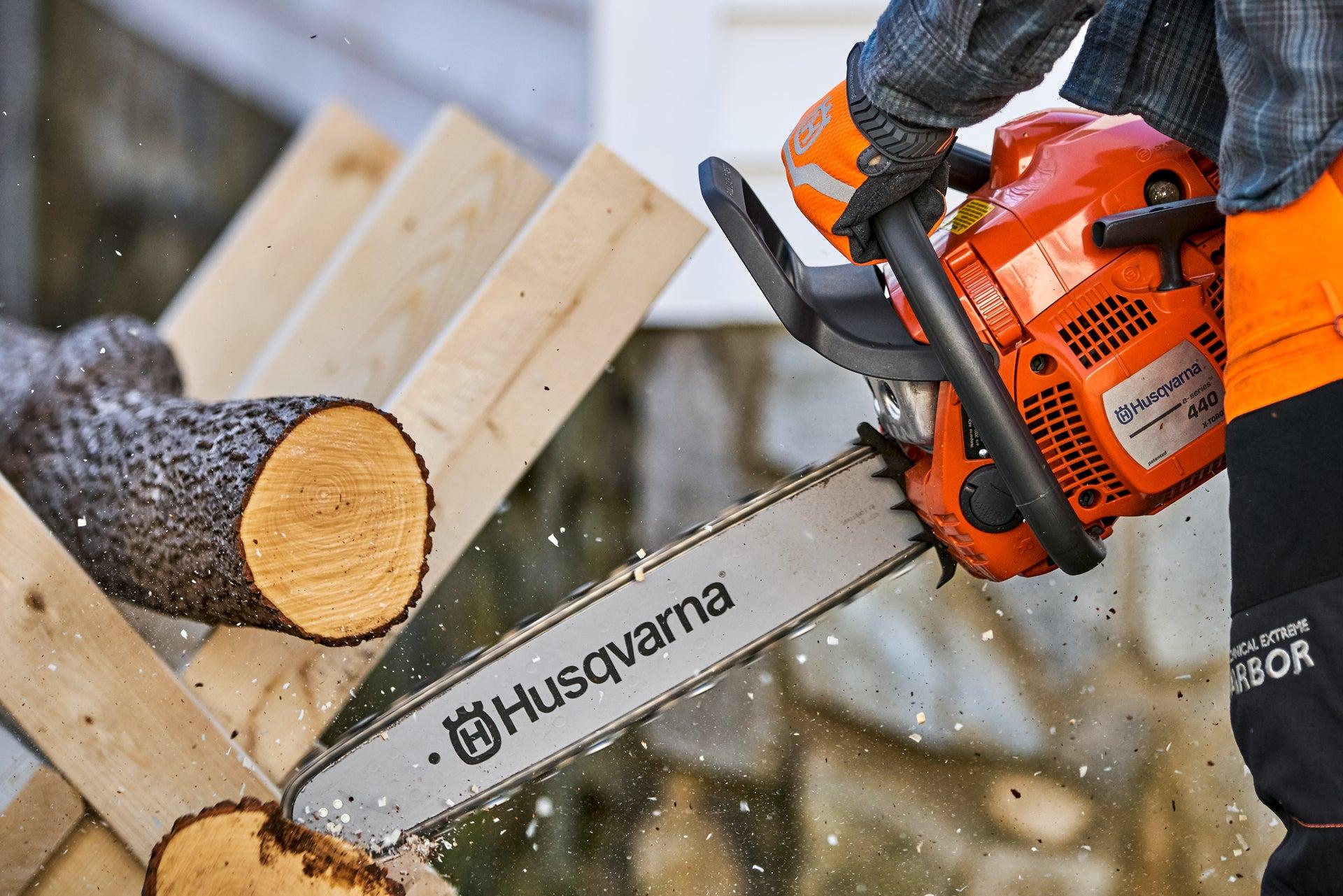Modern chainsaw are adapted to suit specific working conditions and users. Before buying a chainsaw, you should ask yourself a few check questions about how to use it. The answers will help you select the appropriate type and size of chainsaw.
Check questions before you buy a chainsaw.
- How experienced am I in using a chainsaw?
- What am I going to be using the chainsaw for? Full-time use, professional use or home use?
- What size of trees will I be felling most often? Each day, about once a month, or a few times a year?
- How important is chainsaw ergonomics? Should it have low vibration, be well-balanced?
- How important is safety? Should the saw be fitted with TrioBrake?
- How important are service and maintenance features? Do I need an easy to access air filter and spark plug? Should it be easy to stretch and replace the chain?
- In what season will I be using the chainsaw? Should it be adapted to use in winter, with heating the handles?
Different types of Chainsaws:
Chainsaws can be broadly divided into the following groups:
- 1- Professional saws: Chainsaw with maximum performance and optimum ergonomics. Designed for professional full-time or part-time use. Also available with heated handles.
- 2- All round saws: Robust chainsaw. Built as professional saws, but with a slightly lower performance. Designed for part-time use, such as for woodcutting.
- 3-Recreational/Consumer saws: Easy to use, small saws designed for home use by “recreational users” who do not use their chainsaw very often.
- 4-Tree care saws: Developed to be used only by professionals in tree care work. Handling/work techniques for these saws are not addressed in this training.
Chainsaw size:
The size of the chainsaw is determined by piston displacement (cm3) and engine power (hp or KW). The size you should choose depends on the following two factors:
- Proficiency and experience: Choose a smaller chainsaw with a less powerful engine if you are new to chainsaw work. A small saw is more maneuverable than a large one. If the chainsaw is too heavy, your hands and arms will tire, which in the long run represents a safety risk.
- Wood types and size of trees: Choose a larger chainsaw with more power if you want to fell larger trees, especially hardwood, If the model is too small, this will subject the chainsaw to great strain and unnecessary wear.
Guidebar length.
The appropriate length of the guide bar is determined by the tree size and to some extent by the level of expertise the user has. If you are used to handling a chainsaw, you should have access to at least two different guide bar lengths, allowing you to vary the guide bar length with different tree sizes. A shorter guide bar weighs less and is easier to manoeuvre when doing limbing work. The long guide bar is used for larger tree sizes.





